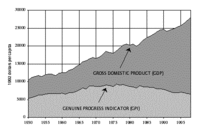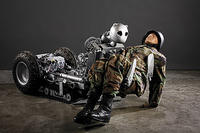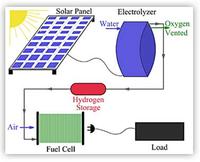-
New L.A. fault map threatens Hollywood development projects
The state of California recently released new geological maps which reveal the presence of an active earthquake fault along the path of major developments in Hollywood. The maps established a zone of 500 feet on both sides of the fault, and state law will require new developments within the zone to conduct underground seismic testing to determine whether the fault runs beneath planned development sites. Building on top of faults is prohibited. Three prominent Hollywood developments — the Millennium Hollywood skyscraper project, the Blvd6200 development, and an apartment project on Yucca Street — are within the 500-foot fault zone.
-
-
Massachusetts takes steps to withstand climate change impacts
Governor Deval Patrick of Massachusetts earlier this week unveiled a $50 million plan to help prepare Massachusetts for the challenges climate change poses to energy supplies, public health, transportation, and basic infrastructure in his state. A $40 million grant from the state’s Department of Energy Resources will help cities and towns develop protections around energy services, and $10 million will go toward shoring up critical coastal infrastructure and dam repair.
-
-
Time to replace GDP with new metrics: experts

Gross Domestic Product is a misleading measure of national success, say public policy experts. “When it was instituted seven decades ago, GDP was a relevant signpost of progress,” they say. “Increased economic activity was credited with providing employment, income and amenities to reduce social conflict and prevent another world war. But the world today is very different compared to how it was then.”
-
-
Quantum physics to make possible secure, single-use computer memories
Computer security systems may one day get a boost from quantum physics, as researchers have devised a way to make a security device that has proved notoriously difficult to build — a “one-shot” memory unit, whose contents can be read only a single time. One-shot memories would have a wide range of possible applications such as protecting the transfer of large sums of money electronically.
-
-
Carbon nanotubes improve flame-resistant coating
Using an approach akin to assembling a club sandwich at the nanoscale, researchers have succeeded in crafting a uniform, multi-walled carbon-nanotube-based coating that greatly reduces the flammability of foam commonly used in upholstered furniture and other soft furnishings. In tests, the flammability of the nanotube-coated polyurethane foam was reduced 35 percent compared with untreated foam. As important, the coating prevented melting and pooling of the foam, which generates additional flames that are a major contributor to the spread of fires.
-
-
Old twin primes conjecture puzzle soon to be resolved
Several centuries ago, the twin primes conjecture was formulated. As its name indicates, this hypothesis, which many science historians have attributed to the Greek mathematician Euclid, deals with prime numbers, those divisible only by themselves and by one (2, 3, 5, 7, 11, etc.). Under this assumption, there exists an infinite number of pairs of prime numbers whose difference is two, called twin primes (for example, 3 and 5), but nobody has been able to confirm this so far. In April 2013, the University of New Hampshire mathematician showing that you will never stop finding pairs of primes separated by at most 70 million. Now, a postdoctoral student at Université de Montréal’s Center for Mathematical Research went even further, reducing the gap to 600. This represents a huge step forward in the quest to establish the twin primes conjecture and revives a long-standing question that has not progressed in years.
-
-
B61-11 earth-penetrating weapon tested for first time in seven years
One of the main purposes of the U.S. nuclear stockpile is deterrence, and one important way to assure deterrence is to have a successful surveillance test that shows that the systems in the stockpile work. Sandia’s annual surveillance program for each weapon type consists of flight tests, lab tests, and component and material tests. On 20 November 2013, researchers conducted a rocket-driven impact test of the nonnuclear components of the B61-11 earth-penetrating weapon, the first such test in seven years. Flight tests subject the weapon to shock, vibration, temperature, rotation, weather, and more. Sandia pulls random units from the stockpile for tests.
-
-
Robots compete in performing emergency response task

Sixteen robots participating in the DARPA Robotics Challenge Trials last month performed such tasks as opening doors or climbing a ladder, all tasks aimed to speed the development of robots that could one day perform a number of critical, real-world, emergency response tasks at natural and human-made disaster sites. While most of the entries were engineered to resemble humanoids with two legs, JPL’s RoboSimian tackled tasks like climbing over rough terrain on all four of its limbs.
-
-
The causes of recent Caribbean earthquakes
A 6.4-magnitude earthquake shook Puerto Rico Monday 13 January. It caused some power outages and cracked floors, but no major damage or injuries were reported. The quake, which struck the northern coastal town of Hatillo, is one of the largest to hit the U.S. territory in recent years. This event comes four days after a 5.0-magnitude earthquake rattled Havana, Cuba. Researchers say that the earthquake in Puerto Rico occurred on the North American-Caribbean plate boundary, whereas the earthquake in Cuba happened well inside the North American plate. Although inter-plate earthquakes do occur, often on older faults that are reactivated, they are less common than those that form at plate boundaries.
-
-
Harnessing solar energy during day for use at night

In one hour, the sun puts out enough energy to power every vehicle, factory, and device on the planet for an entire year. Solar panels can harness that energy to generate electricity during the day. The problem with the sun, however, is that it goes down at night — and with it the ability to power our homes and cars. If solar energy is going to have a shot at being a clean source of powering the planet, scientists had to figure out how to store it for night-time use. Researchers have built a system that converts the sun’s energy not into electricity but hydrogen fuel and stores it for later use, allowing us to power our devices long after the sun goes down.
-
-
Spreading STEM learning opportunities in the San Diego area
UC San Diego and the San Diego region more broadly are well known for strength in STEM— or science, technology, engineering, and mathematics — education. There are numerous STEM pipeline outreach efforts already underway. What has been missing and needed, however, is coordinated and systematic action to spread learning opportunities and to plug “leaks” in the K-20 pipeline to STEM skills, degrees, and careers. The STEM Success Initiative aims to gather community and university resources to lift the region’s K-20 STEM education. The STEM Success Initiative has been launched by the Center for Research on Educational Equity, Assessment and Teaching Excellence (CREATE) at UCSD.
-
-
Using building “belt” cheaply, quickly to repair of earthquake damage
Four years after the January 2010 earthquake, 145,000 people still remain homeless in Haiti. Researchers developed a cheap and simple technology to repair earthquake damaged buildings to help to reduce these delays by quickly making buildings safe and habitable. The technology involves wrapping metal straps around each floor of the building, which are then tensioned either by hand or using compressed air tools. Unlike other repair methods, it does not require expensive materials or a high level of technical knowledge, making it ideal for use in the developing world.
-
-
New test for detecting newly emerging strains of drug-resistant superbug
Molecular assays for MRSA are used in active surveillance programs to identify colonized patients rapidly. Active surveillance is a proven strategy to reduce transmission in healthcare settings and it helps prevent infection in vulnerable patients. BD Diagnostics has received FDA clearance to market the BD MAX MRSA XT Assay for use on the BD MAX System. This is the second assay from BD Diagnostics capable of detecting newly emerging MRSA strains with the novel mecC gene.
-
-
Stimulating plant growth and increasing crop yields
Plants naturally slow their growth or even stop growing altogether in response to adverse conditions, such as water shortage or high salt content in soil, in order to save energy. They do this by making proteins that repress the growth of the plant. Growth repression can be problematic for farmers as crops that suffer from restricted growth produce smaller yields. Scientists have discovered a natural mechanism in plants that could stimulate their growth even under stress and potentially lead to better crop yields.
-
-
Funding gap makes the high costs of research at universities more onerous
Although more opportunity exists for university-based researchers to be innovative, and there is more financial support for innovation than ever before, the cost of university research is rising to new levels and presents a serious funding problem. The “real costs” of research — costs that include indirect costs — often extend far beyond support from a university’s central research office and are almost never covered by funding. As a result, the aggressive research agendas set by universities have costs that often outweigh the ultimate revenue universities hope to gain from research.
-
More headlines
The long view
Autonomous Vehicle Technology Vulnerable to Road Object Spoofing and Vanishing Attacks
Researchers have demonstrated the potentially hazardous vulnerabilities associated with the technology called LiDAR, or Light Detection and Ranging, many autonomous vehicles use to navigate streets, roads and highways. The researchers have shown how to use lasers to fool LiDAR into “seeing” objects that are not present and missing those that are – deficiencies that can cause unwarranted and unsafe braking or collisions.
Tantalizing Method to Study Cyberdeterrence
By Trina West
Tantalus is unlike most war games because it is experimental instead of experiential — the immersive game differs by overlapping scientific rigor and quantitative assessment methods with the experimental sciences, and experimental war gaming provides insightful data for real-world cyberattacks.
Prototype Self-Service Screening System Unveiled
TSA and DHS S&T unveiled a prototype checkpoint technology, the self-service screening system, at Harry Reid International Airport (LAS) in Las Vegas, NV. The aim is to provide a near self-sufficient passenger screening process while enabling passengers to directly receive on-person alarm information and allow for the passenger self-resolution of those alarms.
Falling Space Debris: How High Is the Risk I'll Get Hit?
By Zulfikar Abbany, Julia Vergin, and Katja Sterzik
An International Space Station battery fell back to Earth and, luckily, splashed down harmlessly in the Atlantic. Should we have worried? Space debris reenters our atmosphere every week.
Testing Cutting-Edge Counter-Drone Technology
Drones have many positive applications, bad actors can use them for nefarious purposes. Two recent field demonstrations brought government, academia, and industry together to evaluate innovative counter-unmanned aircraft systems.
Strengthening the Grid’s ‘Backbone’ with Hydropower
By Michael Matz
Argonne-led studies investigate how hydropower could help add more clean energy to the grid, how it generates value as grids add more renewable energy, and how liner technology can improve hydropower efficiency.
